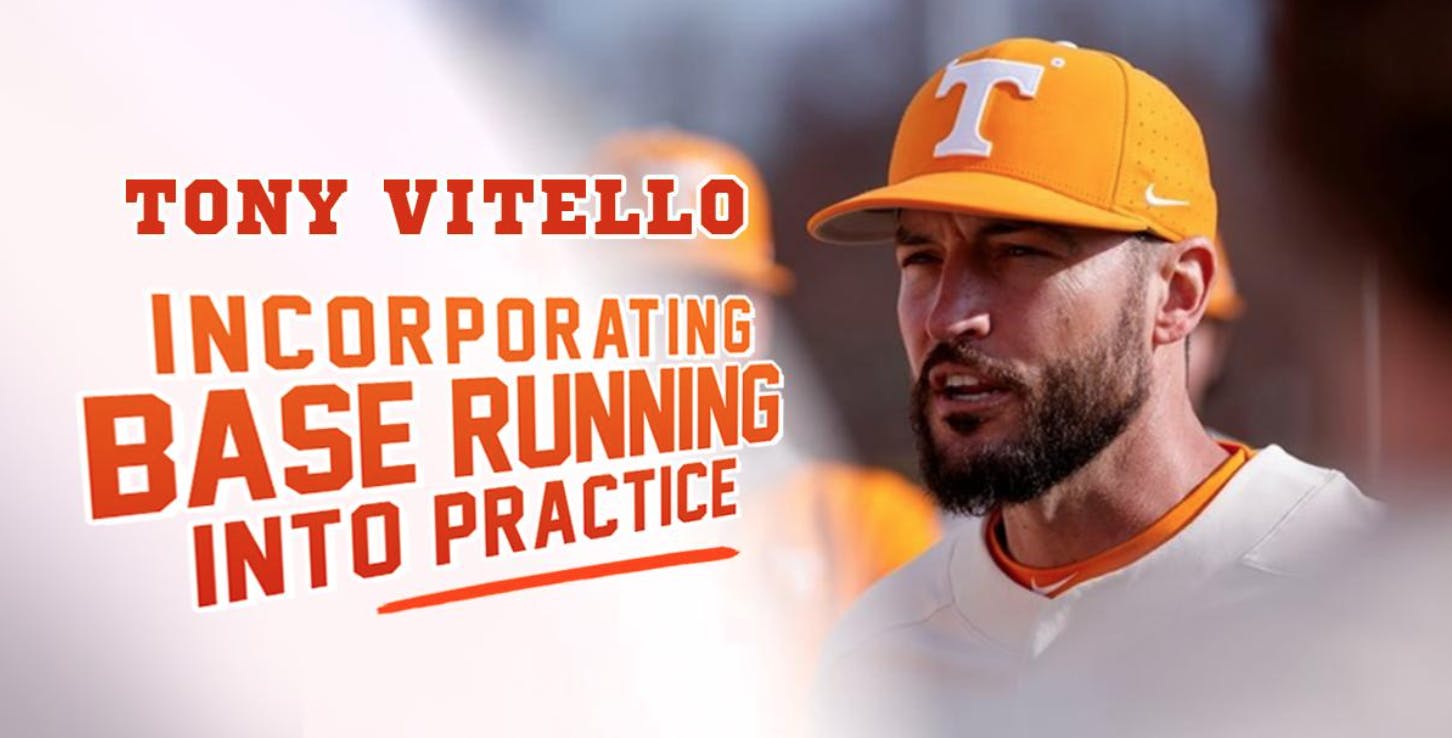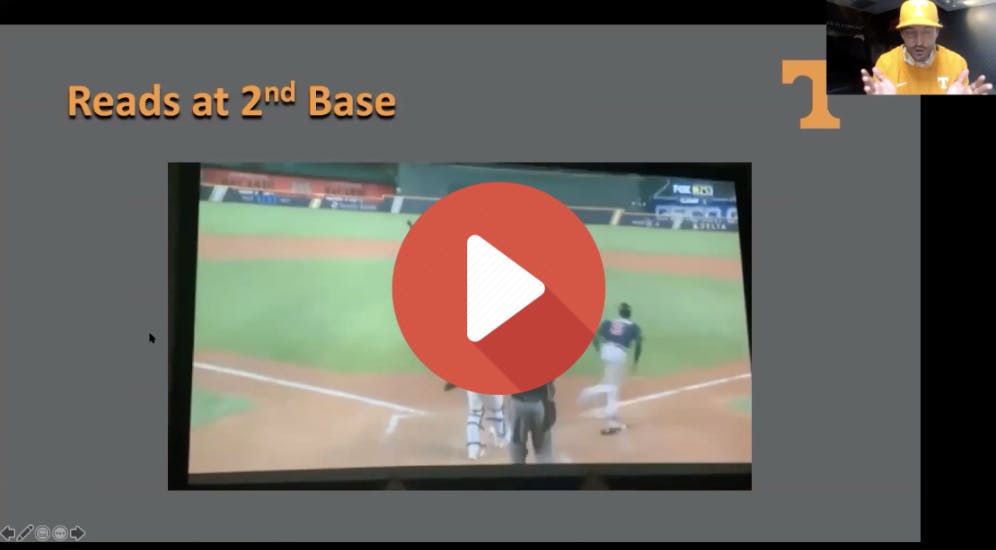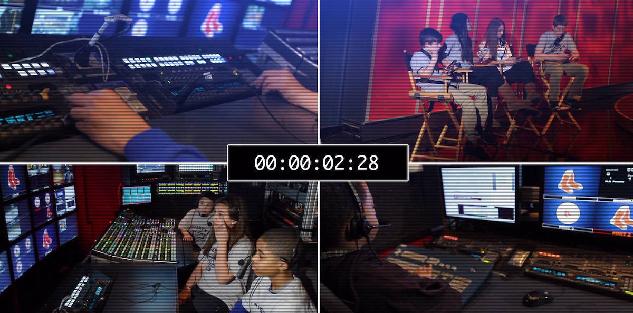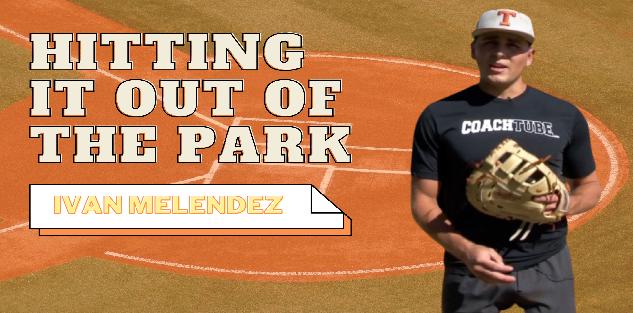Featured courses
- Understanding The Shift by Brandon Ogle
- Two Drills to Improve Outfield Movement and Communication by Grant Young
- The Ultimate Resource For Coaching Youth Baseball by Jackson Chlebowy
- Become a Master at Bunting by Brandon Ogle
- 5 Reasons Why There Is More To Good Base Running Than Just Speed by Brandon Ogle
- Three Injury-Prevention Tips For Your Offseason Pitching Program by Grant Young
- How to Teach Hitting to the Next Generation by Grant Young
- Developing Defensive-Minded Baseball Catchers by Grant Young
- 3 Baserunning Tips to Score More Runs in Baseball by Grant Young
- 5 Outfield Drills to Work on in Season by Alec Burris
- Keys For Scoring More With Runners on First and Third Base by Grant Young
- How to Develop Your Game to Become a Five-Tool Player by Brandon Ogle
- 3 Coaches Share the Keys to Running Baseball Practice the Right Way by Grant Young
- Four Drills to Sharpen a Baseball Hitter’s Vision at the Plate by Grant Young
- Four Quotes to Hit Better With Two-Strikes by Grant Young
- Four of Former MLB Pitcher Juan Nieves’ Movement-Based Pitching Drills by Grant Young
- Two Tips For Developing an Elite Baseball Bullpen by Grant Young
- Overcoming the Four Challenges of Indoor Baseball Practices Because of Weather by Grant Young
- Three Tips to Make Your Baseball Team Mentally Tougher by Grant Young
- Three Priceless Philosophies to Motivate Your Baseball Team by Grant Young
- Three Offseason Baseball Drills to Simulate Competition by Grant Young
- Three Baseball Offseason Strength and Conditioning Essentials by Grant Young
- Important Ways to Improve Your Baseball Team’s Baserunning by Grant Young
- Three Ways to Perfect Hitting Mechanics From an MLB Icon by Grant Young
- Catchers can influence pitchers...for bad or good by Drew Johnson
- Throwing Strikes and Playing Good Defense Equals Wins by Jose Ortiz
- Legendary Indiana Head Baseball Coach Bob Morgan’s Offensive Theory by Grant Young
- Tennessee Head Baseball Coach Tony Vitello on How to Practice Baserunning by Grant Young
- Three Great T-Ball Drills For Youth Baseball Players by Grant Young
- How to Manage a Baseball Pitching Staff by Grant Young
- Three Uncommon Tips to Become a Better Hitter by Grant Young
- How a Baseball Coach Can Develop Strike Throwers by Grant Young
- Drills to Develop Elite Baseball Outfielders by Grant Young
- Baseball Training Exercises to Strengthen Arm and Bat Speed by Grant Young
- How to Use Bunting to Score More Runs by Grant Young
- How To Build An Elite Baseball Infielder by Grant Young
- Three Drills to Improve Your Baseball Team's Infield Play by Grant Young
- Three Keys to Curating a Pitching Staff’s Success by Grant Young
- 3 Techniques to Develop a Baseball Player’s Hitting Approach by Grant Young
- How to Cultivate Confidence Within Your Pitchers by Grant Young
- 5 Every Day Drills To Help You Become A Better Catcher by tyler Linderman
- How to Throw A Curveball by Brandon Ogle
- How to Assemble a Lock-Down Bullpen by Brandon Ogle
- How to Throw a Sinker by Brandon Ogle
- How to be a Smart Baserunner by Brandon Ogle
- Improving a player's slugging average by Phillip Woolgar
- The 8 Fundamentals of Pitching by Drew Johnson
- How to Throw a Deceiving Changeup by Brandon Ogle
- Step Up Your Outfield Defense With These Three Drills by Jose Ortiz
- 8 Baseball Drills Every Player Should Practice by Drew Johnson
- How To Become An Elite Defensive Outfielder by Tyler Linderman
- 5 Tips For Crushing A Curveball by Johnny Grassi
- LEGENDS FOR YOUTH INCLUSION BASEBALL CLINIC by Phil
- Fourteen Ways To Turn A .300 Hitter Into A .210 Hitter by Jay P. Granat, Ph.D.
- How To Become The Ideal Leadoff Man by Brandon Ogle

Tennessee Head Baseball Coach Tony Vitello on How to Practice Baserunning
- By Grant Young
Learning how to be a good baserunner in baseball can be much more difficult than it initially seems. While base running relies heavily on instincts, these instincts can only be developed and fine-tuned through repetition. And because baseball coaches don’t want their players making endless base running mistakes during games, these repetitions can only come during practice.
But the problem is that there’s only so much time a team can be practicing on the field. And since baseball is such a cerebral, repetition-intensive sport, many coaches feel like they can’t dedicate practice time to base running.
Luckily, high-level coaches like Tony Vitello have created ways to kill two birds with one stone by weaving base running into their other parts of practice.
Tony Vitello became the head coach of the Tennessee Volunteers baseball team in July 2017. Since then, Coach Vitello has helped establish Tennessee baseball as an SEC and national power, leading the program to five NCAA regionals (2019, 2021, 2022, 2023, 2024), four NCAA super regionals (2021, 2022, 2023, 2024), and three Men's College World Series appearances (2021, 2023, and 2024). Vitello has also won two National Coach of the Year Awards during his Tennessee tenure.
Vitello’s Volunteers are also fresh off winning the 2024 NCAA Baseball Tournament, marking the first NCAA National Championship in the history of the University of Tennessee's baseball program.
In Coach Vitello’s ‘Incorporating Base Running into Practice’ course, he reveals how he makes baserunning a priority during practice time, without sacrificing any time for another crucial component to winning games.
Speed Work
Before diving into the specifics, Coach Vitello makes an important point about coaching baserunning: while he (and professional coaches) have the ability to recruit and draft specific players, according to their skillsets, it’s up to high school and youth baseball coaches to develop those skillsets and physical attributes.
That being said, it’s still important for coaches at every level to continue to fine-tune and practice their players’ baserunning skills, since speed isn’t the only component to being a good baserunner.
Coach Vitello notes that he develops speed with his Tennessee players by making it a part of their daily warm-up. One such example of this is having players actively working on their stride length.
After stretching, having guys run in a line from point A to point B in as few strides as possible will help teach them to keep their strides long and smooth, which will help increase speed in the long term. And if you can turn it into a competition (such as by saying that whoever can get to a point in the lowest amount of strides is the winner), players will have fun developing this skill.
Another way Coach Vitello works on developing speed is by purchasing a set of speed ladders, box jumps, or jump ropes for his team. He explains that tools like these can be used to keep a group of players occupied, while he or his coaches are coaching another group of players on something else. And by using a rotation system (perhaps during batting practice), that means each player will eventually get an opportunity to develop their speed with these tools.
Moving Up on Balls in the Dirt
Coach Vitello details a few important aspects to keep in mind when coaching players about taking bases when balls are thrown in the dirt.
“Baserunners should follow the ball out of the hand and be able to see the angle,” Coach Vitello said. “A lot of guys just look at the pitcher release the ball and their eyes move toward home plate.”
This small detail can often be the difference between moving up to second (or third) base on a ball in the dirt or remaining stationed. Watching the ball from its entire journey from the pitcher’s hand to the catcher’s mitt (or the bat) enables the baserunner to make early reads about where the ball might be headed.
Coach Vitello incorporates this into practice by saying that if his players are thrown out trying to move up on a passed ball and are thrown out during intrasquads, just have them sent back to whichever base they came from. Making it so there’s no consequence for being over-aggressive on the basepaths allows players to hone their baserunning instincts, which will serve them — and their team — during games.
Reads at 2nd Base

Baserunning isn’t all about speed and instinct. There is also a lot of practical knowledge that coaches can impart to their players to become better, more thoughtful baserunners. An example of this is with reads at second base.
Contrary to popular belief, Coach Vitello notes that patience is a virtue when it comes to getting reads at second base. He shows this with an example of Atlanta Braves All-Star Ronald Acuña Jr. freezing in place while standing at second base, once a ball is hit to deep center field. Acuña doesn’t panic when the ball is hit, remains in place, makes an excellent read that the center is going to catch the ball deep enough where he can tag up, then makes a timely tag and advances to third base.
Coach Vitello praises this effort because many younger players often want to make their decision as quickly as possible. But when it comes to reading a fly ball, there’s almost always plenty of time to make the correct read, rather than the quick read. And taking that time can often be the difference between being safe and being out.
Imparting Coach Vitello’s wisdom on your own players could be all it takes to turn your own team into a nightmare for opponents on the base paths.



